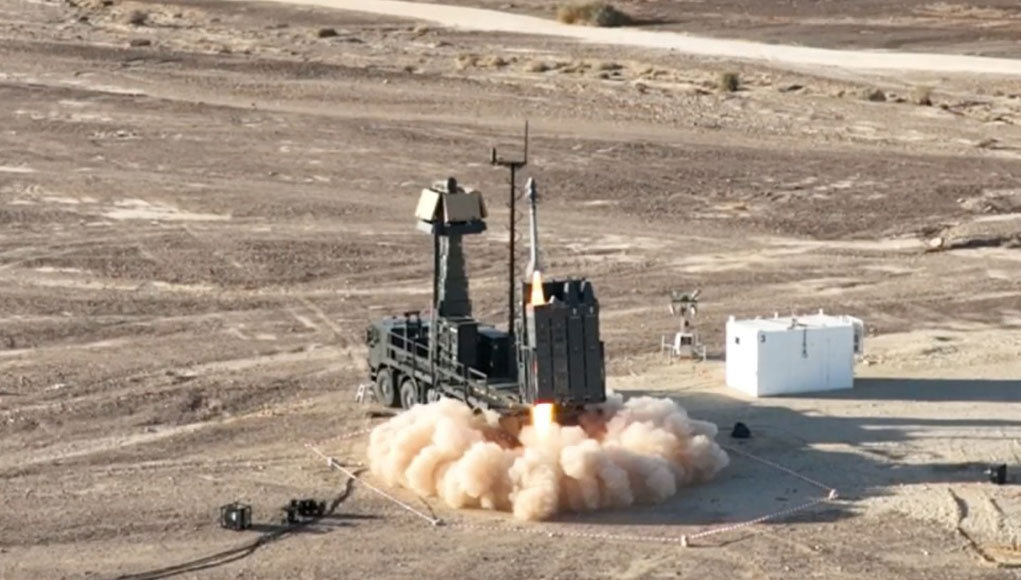Against the ongoing regional Mid-East conflict, RAFAEL Advanced Defense Systems of Israel completed a pivotal SPYDER air-defense system test in its innovative All in One (AiO) configuration. The test featured an unmanned aerial vehicle (UAV) interception under challenging operational conditions, with the SPYDER system achieving a precise and effective defense against the evolving aerial threats representing those encountered by Israel in recent combat engagements.
The SPYDER, a product of RAFAEL, is utilized operationally by over ten military forces globally. It offers robust air defense against various threats, including missiles, UAVs, aircraft, helicopters, and tactical ballistic missiles (TBMs). The system utilizes PYTHON and Derby interceptor missiles, also manufactured by RAFAEL. These truck-mounted launchers use an external radar and an integrated electro-optical system for target acquisition. The newly introduced AiO configuration enhances the SPYDER by integrating a 360-degree coverage radar with the electro-optical systems mounted onto a single elevated mast. This setup also includes an advanced command and control system on the same mobile platform, endowing the SPYDER AiO with superior mobility and autonomous engagement capabilities. The integrated sensors enable operation in all weather conditions, both day and night.
The SPYDER AiO’s advanced AESA radars can operate autonomously or be integrated into a higher echelon command and control (C2) structure. Featuring a search-on-the-move capability, it can swiftly transition to a fire-on-the-halt mode upon detecting threats or receiving an engagement command. The transition from mobility to combat readiness – including vehicle stabilization, radar deployment, and launcher positioning – is completed in approximately three minutes. The system can carry up to eight interceptors and simultaneously engage up to four targets. The Derby interceptors use RF seekers to engage their targets, while the Python 5 uses electro-optical seekers and proximity fuse to defeat targets at close range. The test video shows a top-down target engagement emphasizing Python’s capability to seek targets at low altitudes.
The recent test in Israel demonstrated the SPYDER AiO’s prowess, where it successfully neutralized a UAV with a Python surface-to-air interceptor in a complex operational setting. The test was performed in collaboration with the Israel Ministry of Defense Directorate for Defense Research and Development (DR&D), indicating Israel’s defense establishment in this new capability. Until now, the Spyder’s development has been conducted exclusively by Rafael.
Since the onset of the Iron Swords conflict on October 7, 2023, Israel has faced a barrage of attacks involving ballistic missiles, rockets, cruise missiles, and drones. The nation’s multi-layered defense array, comprising Arrow, David’s Sling, Iron Dome, and Patriot systems, has largely countered these assaults. However, over the past year, the increasing use of One-Way Attack UAVs (OWA UAVs) in Russian and Ukrainian operations has highlighted a critical vulnerability. This scenario underscores the strategic importance of the SPYDER AiO system in addressing OWA UAV threats, given its high mobility, rapid deployment, self-sustainability, and minimized operational footprint.
The AiO configuration safeguards key assets, including mobile troops and sensitive locations. It effectively counters various aerial threats like fixed and rotary-wing aircraft, UAVs, cruise missiles, and precision-guided munitions. With its dual interceptor types, the Spyder AiO offers an operational range of 15 to 40 km and an altitude coverage extending up to 9 km.





















